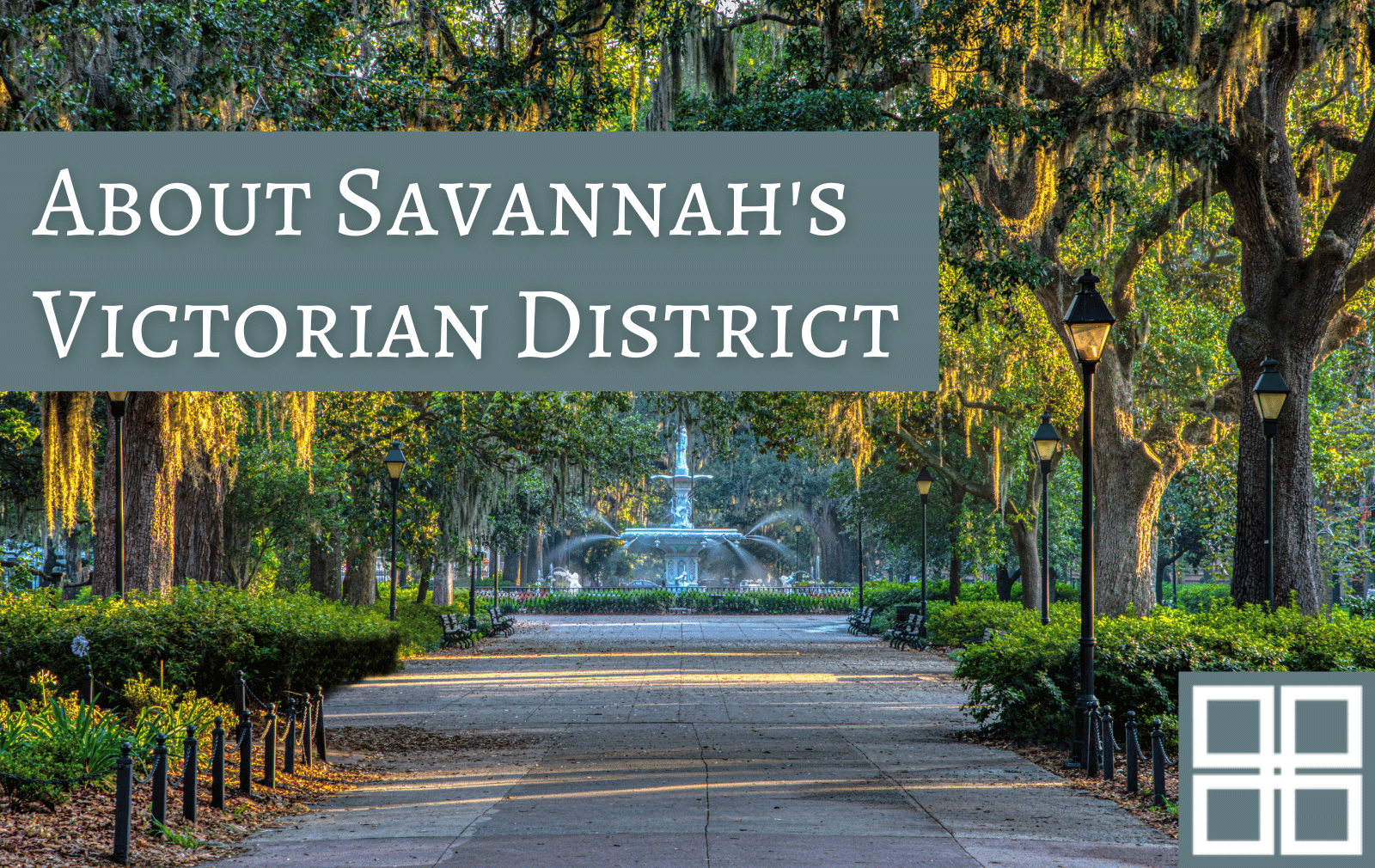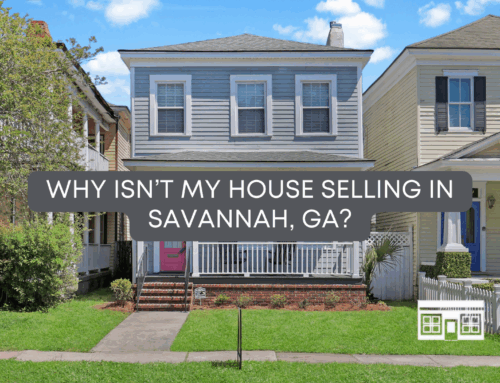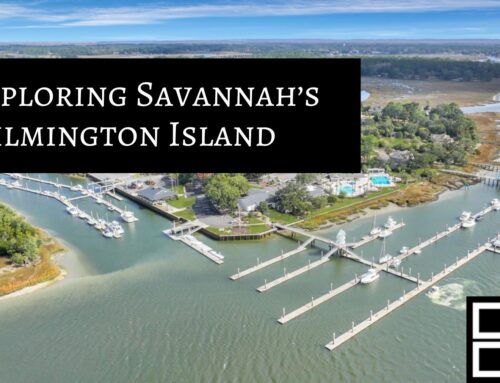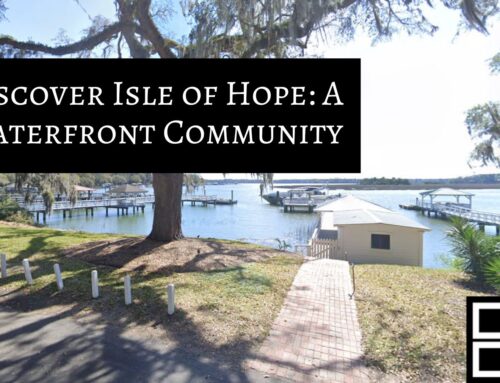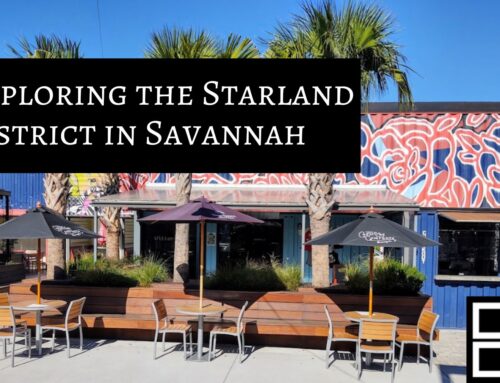About Savannah’s Victorian District
The Savannah Victorian Historic District is a neighborhood that is steeped in history and architectural beauty. Added to the National Register of Historic Places in 1974, it is known for its beautiful homes and lush greenery. This makes it a popular destination for both locals and visitors alike.
In this article, we’ll explore the history of the Victorian District, its architecture, neighborhood life, and preservation efforts. We’ll also look at what the future holds for this important part of Savannah’s history and culture.
The history of the Victorian District
Known as Savannah’s first neighborhood, the Victorian District is located just south of the Historic District. It is bounded by East Broad Street to the west, Gwinnett Street to the north, and Victory Drive to the south. It was developed in the late 19th century, during a time of rapid growth and expansion in Savannah.
A key factor that contributed to the growth of the Victorian District. This was the arrival of the railroad in Savannah in the 1850s. This allowed for easier transportation of goods and people, and helped to spur economic development in the area.
As the city grew, the Victorian District became a hub of activity and commerce. Many of the city’s businesses and industries were located within its borders. The district was home to cotton mills, lumber yards, and other manufacturing facilities. The Victorian District provided jobs and economic opportunities for the people of Savannah.
During this time, many wealthy residents of Savannah began building grand Victorian-era homes in the district. These homes showcased the latest architectural trends and styles of the time. They were often built with high ceilings, large windows, and ornate detailing. This reflected the opulence and elegance of the Victorian era.
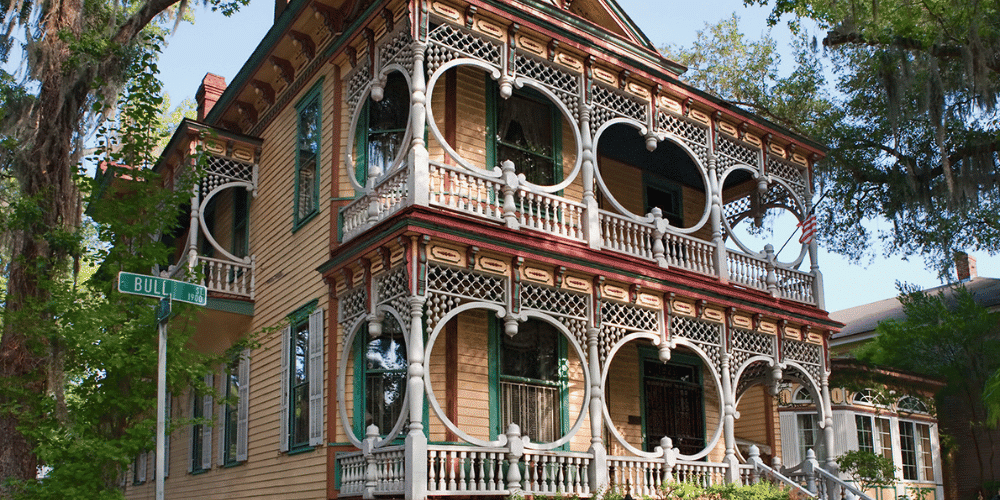
Architecture of the Victorian District
The Victorian District in Savannah is known for its beautiful and ornate architecture. Many of its homes and buildings feature intricate details and unique design elements.
One of the defining characteristics of the district’s architecture is its focus on ornate details and decorative elements. This is reflected in the use of materials like wrought iron. This can be seen in the many balconies and fences throughout the neighborhood.
Many of the homes in the Victorian District also feature unique design elements like turrets, towers, and bay windows. These elements help to create a sense of grandeur and elegance, reflecting the opulence and prosperity of the Victorian era.
In addition to its focus on decorative details, the Victorian District is also characterized by its eclectic mix of styles. Buildings in the neighborhood feature a range of architectural styles, including Victorian, Gothic Revival, Greek Revival, and Italianate.
This diversity of styles reflects the many different influences that contributed to the development of the neighborhood. From wealthy merchants and traders who built grand homes, to the artisans and craftsmen who worked on the buildings themselves.
The architecture of the Victorian District is a testament to craftsmanship of the designers and builders who created these beautiful structures. Visitors are sure to be struck by its beauty and charm.
Real estate in the Victorian District
The Victorian District is known for its beautiful, historic luxury homes and architecture. Many of these homes have been restored to their former glory. This makes them highly sought-after by homeowners and real estate investors alike.
However, the process of buying and owning a home in the Victorian District can be complex. This is due in part to the neighborhood’s strict historic preservation guidelines. These guidelines ensure that any renovations to existing homes must be in line with the historic character of the neighborhood.
This can make it challenging for potential buyers to find homes that meet their needs while also adhering to these guidelines. However, many real estate professionals in the area are well-versed in the historic preservation guidelines. Being experts in the local market, real estate agents can help buyers navigate the process.
Real estate prices in the Victorian District can be higher than in other areas of Savannah. However, many buyers consider it a worthwhile investment due to the neighborhood’s unique character and historical significance. Additionally, the Victorian District’s central location and proximity to a number of popular attractions make it a highly desirable location.
In recent years, there has been a trend towards more mixed-use development in the Victorian District. A number of commercial properties are being converted into multi-use buildings that include both residential and retail spaces. This has helped to further revitalize the neighborhood and attract new residents and businesses.
Overall, while buying real estate in the Victorian District can be a complex process, it is a smart investment. With its beautiful architecture, central location, and thriving community, the Victorian District is sure to remain a highly sought-after destination.
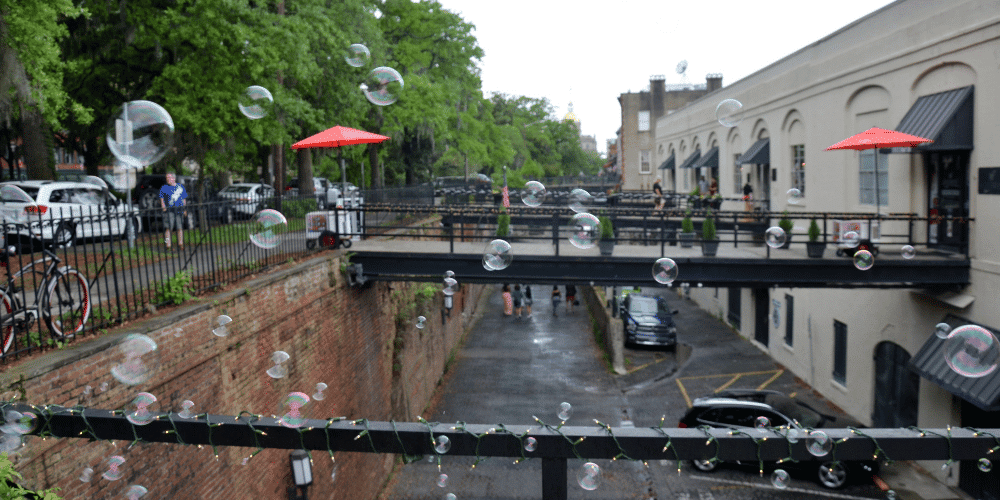
Neighborhood life in the Victorian District
Today, the Victorian District is a vibrant and diverse community that is home to a mix of families, professionals, and artists. The area has a strong sense of community, with many active neighborhood associations and community groups. These organizations work to promote and preserve the district’s historic character and charm.
One of the key events in the neighborhood is the annual Victorian District Tour of Homes, which takes place each December. This popular event allows visitors to tour some of the district’s most beautiful homes and gardens. It offers the chance to learn about the history and architecture of the area.
The Victorian District is also home to a number of parks and green spaces. Perhaps most well-known is Forsyth Park, one of the top things to do in Savannah, which is located just north of the district. This beautiful park features walking paths, fountains, and a large open field that is often used for events and festivals.
Preservation and future of the Victorian District
Preservation is an important issue in the Victorian District. The Savannah Historic District Board of Review oversees the review of proposed changes to buildings in the district. This is to ensure that they comply with historic preservation guidelines and maintain the district’s historic character.
Over the years, the Victorian District has faced a number of challenges. The threat of development and the impact of hurricanes and other natural disasters are just a few. However, the neighborhood has proven resilient. Today, it is a thriving community that is committed to preserving its unique history and architecture.
Looking to the future, there are both opportunities and challenges facing the Victorian District. One of the biggest opportunities is the continued growth and development of Savannah as a popular tourist destination. As more visitors come to Savannah, the Victorian District is likely to become an even more popular destination. This will help to bring new residents and businesses to the area.
However, this growth also poses challenges for the neighborhood. Developers may seek to build new structures or make changes to existing buildings. This could impact the historic character of the district. It is important for the community to remain proactive in their efforts to preserve the district’s historic architecture and character.
Conclusion
The Victorian District is a neighborhood that is rich in history, culture, and beauty. This is part of what puts it among the top neighborhoods of Savannah. From its development to present-day, the district has played an important role in the history of Savannah.
Not just a tourist destination, this thriving residential community is poised for continued growth and success. However, it is up to the community to remain committed to preserving the district’s unique history and architecture. This will ensure that it remains a vibrant and beautiful part of Savannah for generations to come.



